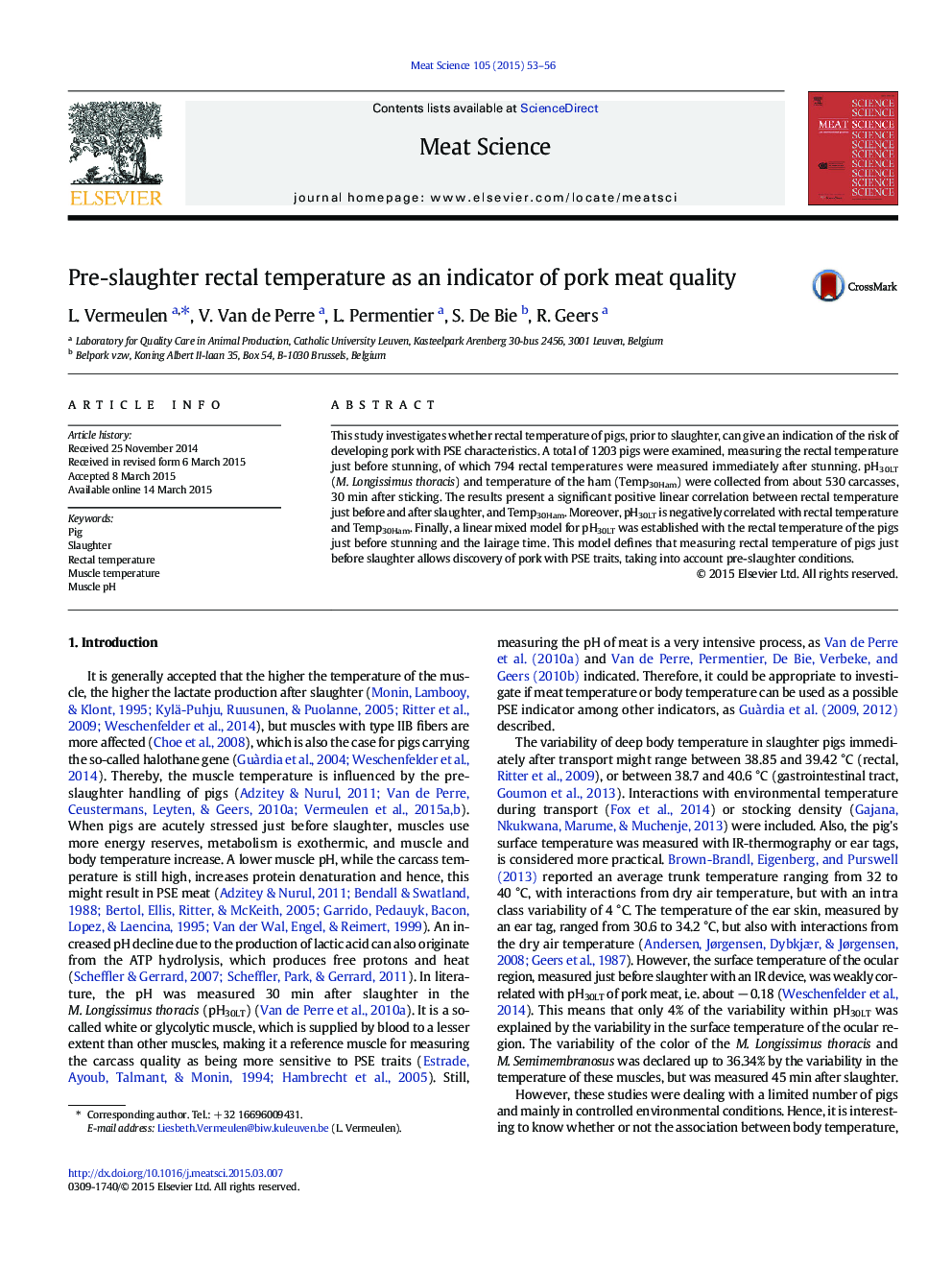| Article ID | Journal | Published Year | Pages | File Type |
|---|---|---|---|---|
| 2449678 | Meat Science | 2015 | 4 Pages |
•The mean Temp30Ham was higher than the mean rectal temperature.•pH30LT was negatively correlated by Temp30Ham, TempRLairage and TempR.•A lower TempRLairage results in a higher pH30LT, associated with a lower risk to develop PSE meat.•The final model showed that TempRLairage could be used as a pH30LT and thus a PSE-indicator of pork.
This study investigates whether rectal temperature of pigs, prior to slaughter, can give an indication of the risk of developing pork with PSE characteristics. A total of 1203 pigs were examined, measuring the rectal temperature just before stunning, of which 794 rectal temperatures were measured immediately after stunning. pH30LT (M. Longissimus thoracis) and temperature of the ham (Temp30Ham) were collected from about 530 carcasses, 30 min after sticking. The results present a significant positive linear correlation between rectal temperature just before and after slaughter, and Temp30Ham. Moreover, pH30LT is negatively correlated with rectal temperature and Temp30Ham. Finally, a linear mixed model for pH30LT was established with the rectal temperature of the pigs just before stunning and the lairage time. This model defines that measuring rectal temperature of pigs just before slaughter allows discovery of pork with PSE traits, taking into account pre-slaughter conditions.
